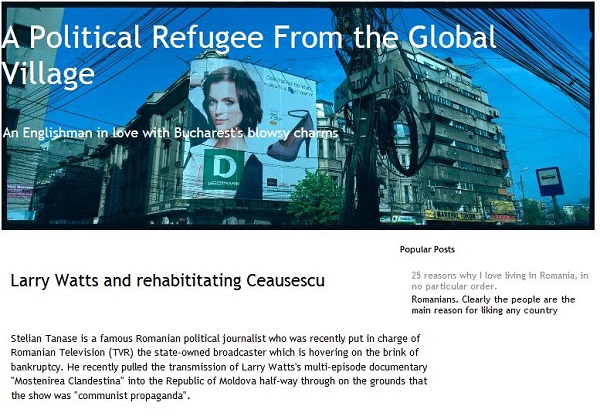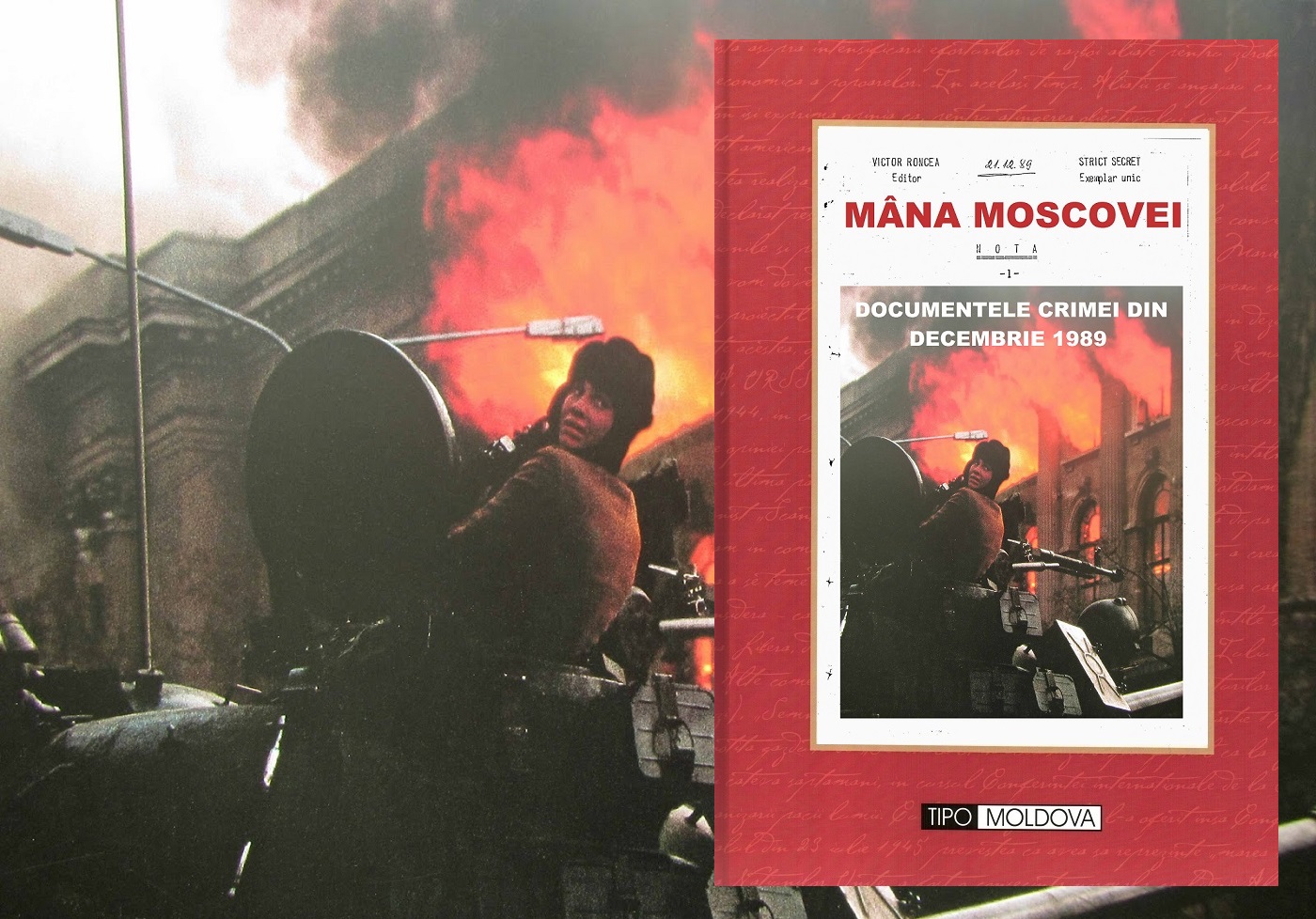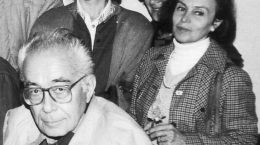 Larry Watts and rehabilitating Ceausescu
Larry Watts and rehabilitating Ceausescu
Stelian Tanase is a famous Romanian political journalist who was recently put in charge of Romanian Television (TVR) the state-owned broadcaster which is hovering on the brink of bankruptcy. He recently pulled the transmission of Larry Watts’s multi-episode documentary “Mostenirea Clandestina” into the Republic of Moldova half-way through on the grounds that the show was “communist propaganda”.
Larry Watts, who is a friend of mine, has many enemies. He is accused of rehabilitating Antonescu and now Ceausescu too. As someone whose television programme was binned by Ion Cristoiu, Watts has my sympathy.
Watts always insists that he considers Ceausescu a
thoroughly bad thing and has no wish to rehabilitate him but in fact
his historical works do just that, as far as foreign policy is
concerned, and I do not say this as a criticism. Of course Ceausescu
needs to be rehabilitated – he was not the demonic figure writers in
English considered him to be back in 1990. Watts makes the good point
that English-language journalists to some degree followed the
anti-Ceausescu propaganda put out by the USSR.
I have not read Watts’ latest book but this is a review of his earlier
work, With Friends Like These, which may give you an idea of his
point of view and the work he has done. It is certainly very useful
work.
The recent past is a forgotten country. The Cold War now seems a
period as remote as the Thirty Years War, John le Carré’s novels
almost as quaint as those of Dumas père. Those of us who grew up in
the West in the Cold War rather than studying it as history rely on
memories of information that was very partial and misleading. We now
know that the so called satellites of the USSR were very much actors
following their own scripts. Often the supposed puppets were pulling
the strings. Kim Il Sung manipulated Stalin into supporting his attack
on South Korea and Ho Chi Minh inveigled Russia into enabling him to
defeat the South Vietnamese. Now Larry Watts’ ground-breaking,
enjoyable and meticulously researched book, which deserves to find a
wide audience, shows that Ceausescu’s Romania posed a threat to the
USSR greater than Tito and comparable with the 1956 Hungarian
uprising, the Prague Spring and the Solidarity movement in Poland.
Eastern Europe was not the story of quislings ruling subject people
on instructions from the Kremlin. The men and one or two women (of
whom Romanians Anna Pauker and Elena Ceausescu were two of the most significant)
who ran the Communist Empire were believers who had risked death and
imprisonment from their enemies and from their communist friends
because of their beliefs. In power they combined as all politicians do
the desire for power, love of manipulation and genuine idealism, to
which they added a ruthless devotion to their grim cause and a
fanatical conviction that they understood the direction of history
which seemed to them scientific but we clearly see to be essentially religious.
Of course Marx and Lenin were wrong. Class is not the
driver of history, nor even are economic interests. Nations command
far more allegiance even from socialists than social classes. Behind
the monolithic appearance of the Soviet Bloc the disappearance
of national differences of course did not happen. What is remarkable
is the degree to which the conflicts between neighbouring countries in
Eastern Europe before 1945 continued seamlessly after the Communists came
to power. The most arresting example is Hungary, until 1918 the most
reactionary country in Europe west of Czarist Russia. There in 1919 in
the vacuum left by the disappearance of the Hapsburg Empire the arch
conservative antisemitic army and civil service enlisted as supporters
of the Bolshevik revolution of Bela Kun a.k.a. Aaron Cohen.
The Hungarian gentile middle class saw in Bolshevik Russia the only
hope of preserving Greater Hungary, in particular Hungarian
possession of Transylvania and the Banat, which had been occupied
after the armistice by Romania. Kun’s regime hoped the Russian Red
Army would break through Romanian lines into the Bucovina and link
up with the Hungarian Red Army. Instead, the Romanian army occupied
Budapest and overthrew the Communists.
Larry Watts’s book explains that in the 1944-46 history repeated itself and
the supporters and gendarmes of the Hungarian dictator Admiral Horthy
who had distinguished themselves in Hungarian occupied
Transylvania with great brutality, reinvented themselves as Communist
officials and ‘people’s police’. Stalin encouraged Hungarians to hope
that Transylvania would become a separate country or divided between
Romania and Hungary. He played off Hungary and Romania against each
other in the same way that Hitler had done.
Meanwhile the annexation of Bessarabia (now most of the Republic of Moldova)
and the Northern Bucovina (which became part of the Ukraine) led to
the arrests,
deportations and killings of hundreds of thousands of ethnic Romanians who
found themselves living in the USSR. In addition, Khrushchev in charge of
post-war Ukraine presided over a deliberate famine which Watts says was
probably aimed at ethnic Romanians that may have killed between one and
two hundred thousand people, while Leonid Brezhnev, First Secretary of
the Soviet Republic of Moldavia, may have reduced the ethnic Romanian
population there by as many as a quarter of a million.
Mutual antipathy between Russians and Romanians (the Mamalizhniki or
polenta eaters) has long roots in conflict over territory. Russia ruled
Bessarabia (Eastern Moldavia) off and on since 1812. She occupied the
rest of Romania on several occasions between 1812 and 1919. It was
very feasible had it not been for the other Powers that Romania would
have been incorporated in the Russian Empire as were
Georgia, Armenia and central Asia.
Communism only exacerbated things. Engels whose works had the status
of holy scripture for Marxist-Leninists had written that the Romanians
were a ‘degenerate’ people, ‘a people without history’. The revolution
said Engels would ‘annihilate’ the Romanians, wiping them ‘from the
face of the earth. And that too would be a step forward.’ Engels wrote
this in 1849, angry with the Romanians for fighting for the Emperor
against the ‘progressive’ forces of the Hungarian nationalist Kossuth.
From Communism to Fascism was always but a step.
Gheorghiu Dej the Communist leader of Romania from 1948 till his death
in 1965 was unique among Stalin’s satraps in not being a ‘Muscovite’, a
Communist trained during the 30s in Russia. He won favour with Moscow
for his support in helping reassert Soviet control over Hungary after
the 1956 Revolution and succeeded (one would like Watts to have
explained in more detail how) in persuading the USSR to withdraw
troops from Romania by 1958. Crucially the Romanians also managed to
roll up very extensive KGB and Hungarian spy networks (very often the two
were combined). These included a series of Hungarian irredentist
secret societies operating in Transylvania run by the Communist
government in Hungary with KGB knowledge.
In the Warsaw Pact Organisation hastily cobbled together in 1955,
Romania from almost the beginning played the role of enfant terrible
and barrack room lawyer. Romania took an independent line, enjoying
good relations with Tito, building the Iron Gates hydroelectric plant
on the Danube without Khrushchev’s permission. In 1963 Dej told
Kennedy that he did
not support Soviet missile deployments in Cuba and would never allow
Soviet missiles to be stationed on Romanians soil. The Cuban crisis
may have precipitated an effective declaration of independence in
1963 by the Romanian government who refused to increase military
budgets saying they saw no threat of aggression from the West. The
Bucharest Spring of 1964 Watts convincingly argues should be compared
to the split with Tito in 1948, the Hungarian revolution of 1956 and
the Prague spring four years later.
Ceausescu was more disruptive than de Gaulle in NATO. In June 1965,
unnoticed by Western secret services, Romania was dropped from Warsaw
pact military operations. The Pentagon continued to plan on the
assumption that Romania would fight alongside her Warsaw pact partners
even though Romania’s role in the alliance was to impede Soviet
policy. Again unbeknown to the CIA, Romania became a Chinese ally
second only in importance to Albania, a position it used to help mend
fences between China and the United States. For example, Romania helped
persuade Hanoi to negotiate with Washington. In 1967 Romania refused to
break off relations with Israel following the Six Day War while De Gaulle
aligned with the Soviet position. Romania acted as honest broker between Israel
and the Arab states and can be take some of the credit for the 1978 Camp
David agreement that led to peace between Israel and Egypt.
Ceausescu, alone of the Communist leaders, publically backed the
Prague Spring and condemned the Soviet intervention in Czechoslovakia.
Yet none of this was understood by the CIA who were spellbound for many
years by the disclosures of the Soviet defector Golitsyn. Golitsyn said that
Romanian independence was a KGB ruse. This Trojan horse theory which
had been disseminated before Golitsyn continued through
the Gorbachev period. By 1990 it had become the received wisdom in the
West, after Ceausescu’s regime had been overthrown by Romanian
Gorbachevites working in league with the Kremlin and the KGB.
Other legends were circulated according to which Kadar and Gomulka
followed independent lines whereas both were always loyal to Moscow.
General Jarulselski and Urho Kekkonen long-time President of Finland
were Soviet agents. Tito was far more amenable to the Soviets than
Romania and unlike Romania bought Soviet military equipment. He
allowed the Russians to fly over Yugoslav aerospace and use land
transport routes and Yugoslav ports for transshipping arms to Soviet
clients in the Middle East.
Watts tells us that on several occasions between 1968 and 1971 Russia
planned to invade Romania and Honecker of East Germany was told as
late as the end of 1973 that Brezhnev had approved an invasion. Russia
was emboldened by the relative nonchalance with which the Western bloc
has reacted to the invasions of Hungary and Czechoslovakia. Had an
invasion of Romania been received in the same way, Russia intended to
march into Yugoslavia. In August 1968, the Romanian Communist Party
expected an invasion by the USSR and voted almost unanimously to
fight, though as Ceausescu admitted without hope of success. The Stasi.
the East German secret service reclassified Romania as an enemy state
at this time. The Americans unaware of what was going on were anxious
to avoid being drawn into a conflict. So was Tito, who had good reason
to fear that Yugoslavia would be invaded after Romania. In August 1968
Tito turned to Great Britain for help, using Sir Fitzroy Maclean as an
intermediary, in the event of a Soviet invasion of Romania. MI6
unlike the CIA knew that a Russian invasion was on the cards. Harold
Wilson discussed with Michael Stewart and Denis Healey the idea of
sending crack troops to fight alongside partisans as in the Second
World War. 1968 not 1963 was probably the moment when Cold War
came closest to becoming hot.
Ceausescu’s famous speech from the balcony of the Central Committee
building on 23rd August 1968 had won him national support but
Nagy and Dubcek had had equal popular backing. Why did the Russians
and their allies not invade? For a number of reasons. Because in
Romania, unlike in Hungary and Czechoslovakia, they no longer had a
sufficiently extensive intelligence network enabling them to
know what was going on in the party or the armed forces or clients in
top positions who could request a Soviet intervention, because
Ceausescu and his colleagues unlike the Czechs would have fought and
because they had assumed national control over their armed forces
which were prepared a military response against an invader from any
direction. The fact that the US, Britain, and perhaps most explicitly,
Socialist giant China had weighed in to deter a Soviet move no doubt
played their role.
Courted by the Carter Administration in the late 70s
Watts argues that Ceausescu was free in the late 1970s to have led Romania
into a non-aligned position similar to that of Yugoslavia and to have
competed with Tito for American favours. Instead he decided to create
an autarchic national communist state, independent of Moscow and
Washington, a path that led him to the firing squad in Tirgoviste on
Christmas Day, 1989.
Surce: A Political Refugee From the Global Village via Ziaristi Online




